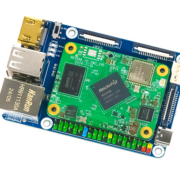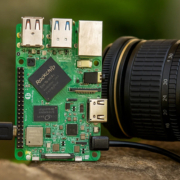What Are Dev Boards?
In the world of electronics, embedded systems, and IoT innovation, development boards—commonly known as dev boards—are a crucial tool for engineers, students, and makers. Whether you’re building a prototype smart home controller, testing an AI model, or learning embedded programming, dev boards provide a practical, affordable starting point.
But what exactly are dev boards, and how are they used? Let’s explore.
Definition: What Is a Dev Board?
A development board is a ready-to-use circuit board that includes a microcontroller or processor (MCU or SoC), along with essential components like:
- Power supply input
- Programming and debugging interfaces (e.g., USB, JTAG)
- GPIO (General Purpose Input/Output) pins
- Interfaces such as I2C, SPI, UART
- Sometimes Wi-Fi, Bluetooth, or Ethernet
- Often an onboard LED, button, and reset circuitry
They’re designed to help developers test code, build prototypes, and evaluate chip capabilities without needing to design a custom PCB from scratch.
Common Types of Dev Boards
1. Microcontroller-Based Dev Boards
- Examples: Arduino Uno, STM32 Nucleo, ESP32 DevKit
- Use Case: Ideal for simple tasks like reading sensors, controlling lights, or handling button inputs
- Programming: Typically in C/C++ or MicroPython
2. SoC-Based Dev Boards (Single-Board Computers)
- Examples: Raspberry Pi, NVIDIA Jetson Nano, Portworld RK3566 Dev Board
- Use Case: More powerful applications like running Linux, Android, AI models, or controlling touch screens
- Programming: Full OS environments with support for Python, Java, Android SDK, etc.
3. FPGA Dev Boards
- Examples: Xilinx Zynq, Intel DE10-Nano
- Use Case: Custom logic design, signal processing, industrial control
Key Features of Dev Boards
| Feature | Benefit |
|---|---|
| Plug-and-Play | Ready out of the box for experimentation |
| Open Source Tools | Supported by popular SDKs and community resources |
| I/O Access | Easily connect to sensors, motors, displays, or other hardware |
| Prototyping Friendly | Ideal for building early-stage models before final product design |
| Flexible OS Support | Many boards run Android, Linux, or Real-Time Operating Systems (RTOS) |
Dev Boards in Smart Home Development
In smart home applications, dev boards are often used to:
- Build early prototypes of control panels, sensors, and hubs
- Evaluate performance of SoCs like RK3566 or RK3588 with Android/Linux
- Test protocols like Zigbee, RS485, or MQTT
- Integrate voice assistants or AI features
For example, a developer building a wall-mounted smart thermostat might start with a Portworld RK3566-based development board, which offers:
- Android OS with touch screen support
- Interfaces like RS485, Ethernet (PoE), Wi-Fi, and GPIO
- AI inference capability via built-in NPU
- SDK, BSP, and Linux/Android firmware tools
When Should You Use a Dev Board?
You should consider using a dev board when:
- You’re in the early stages of product development
- You want to evaluate chip/platform capabilities before finalizing hardware
- You’re a startup building proof-of-concept demos
- You’re learning embedded systems or testing new firmware
Later, once your prototype is stable, you can transition to a custom carrier board or production-grade SoM module to reduce cost, size, and tailor the design.





